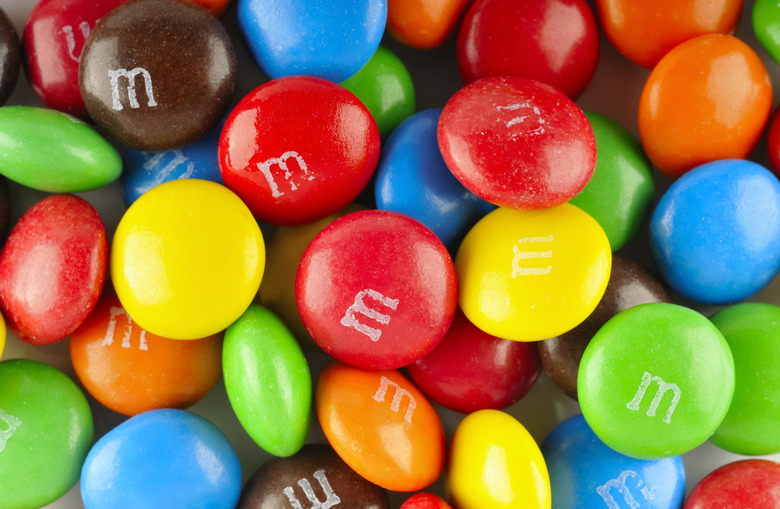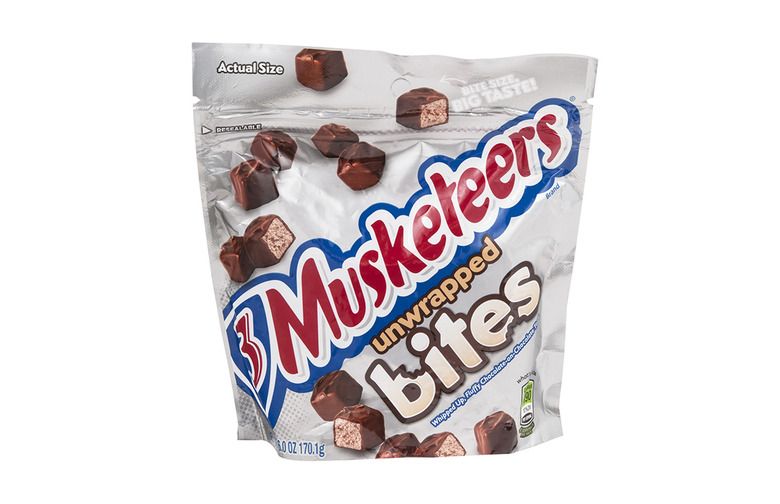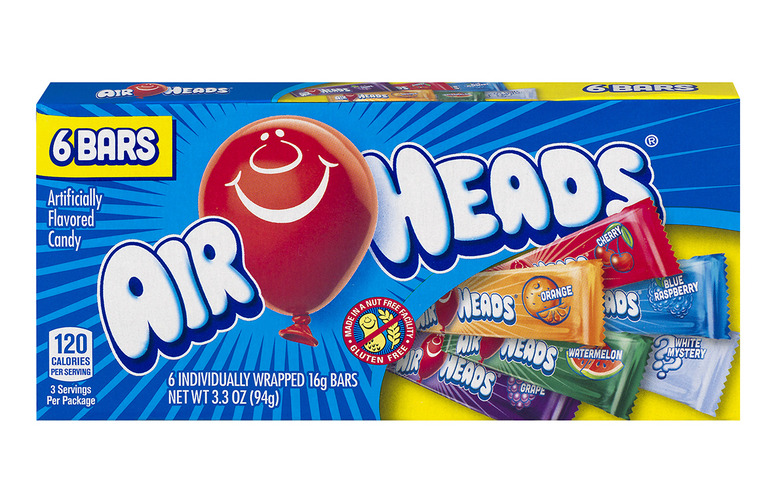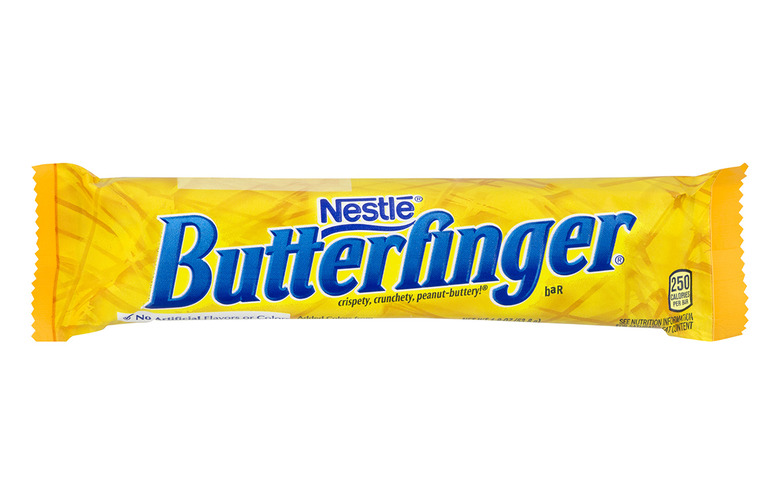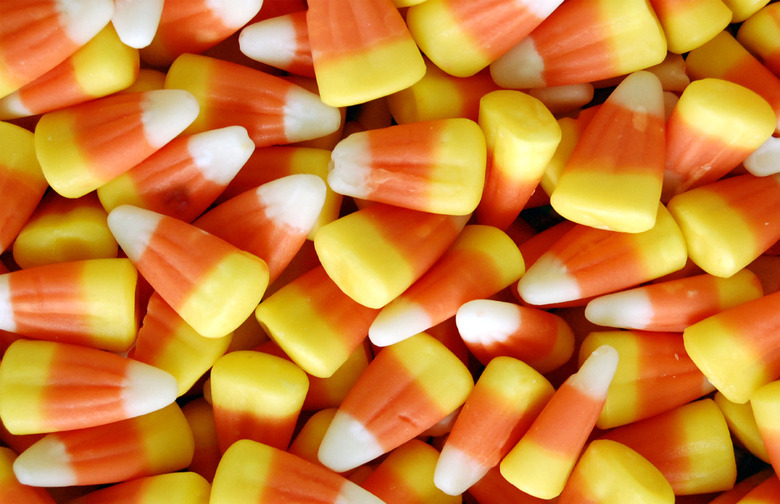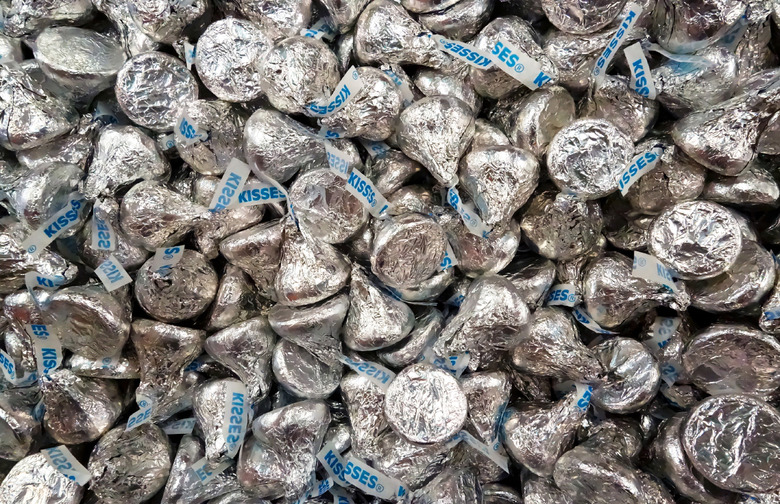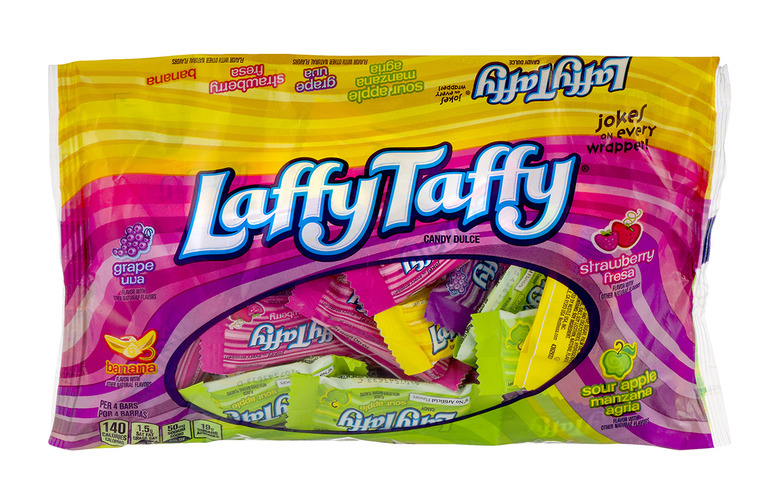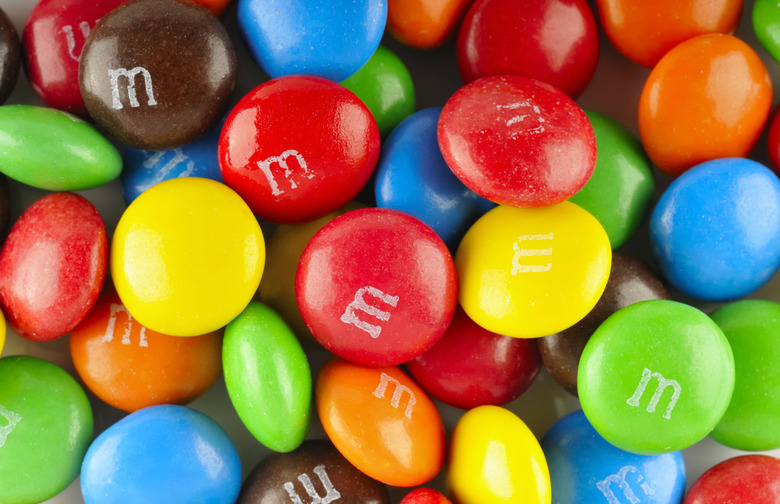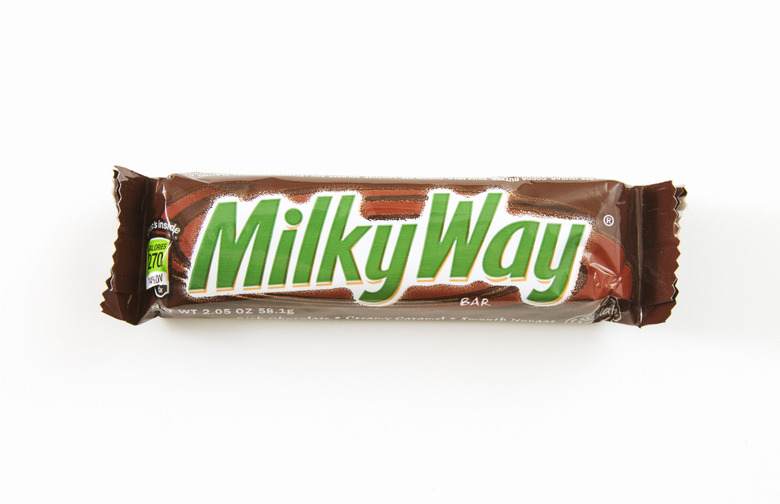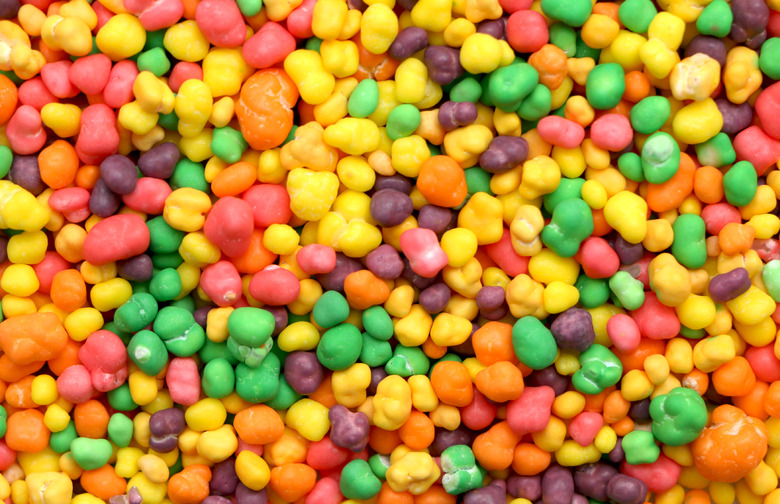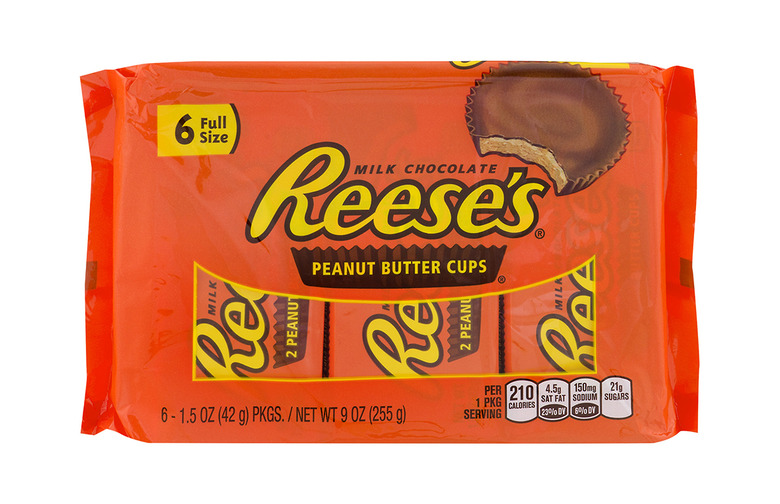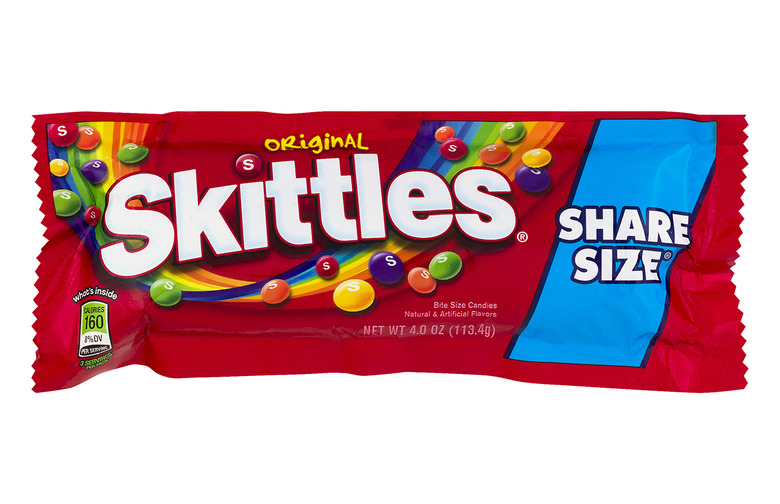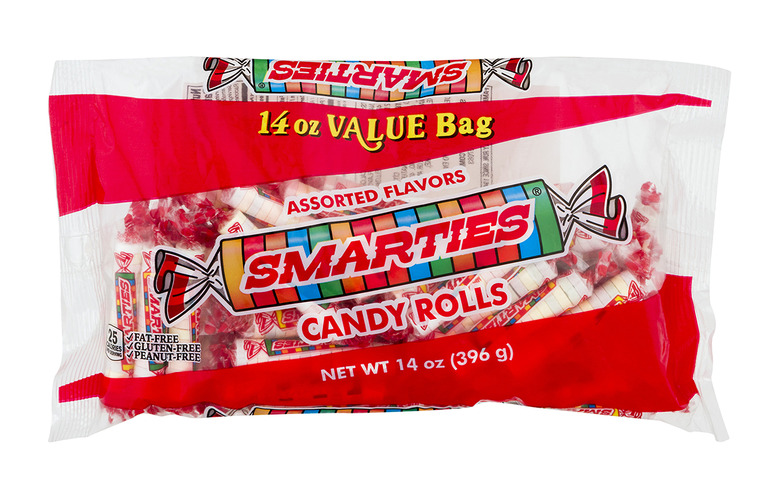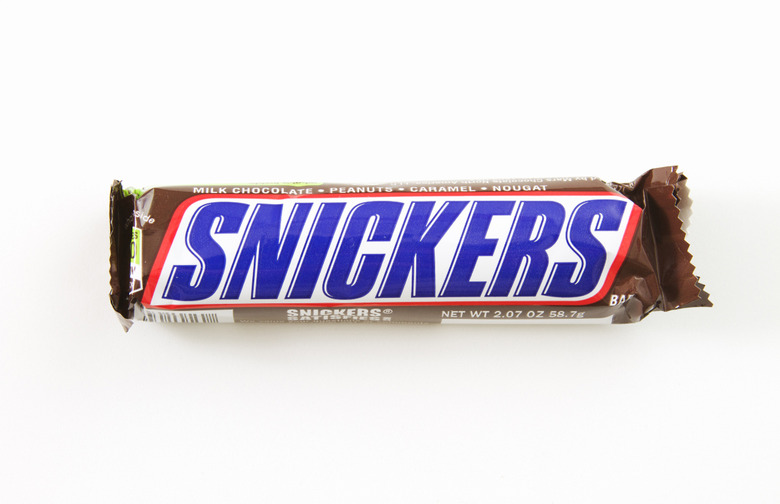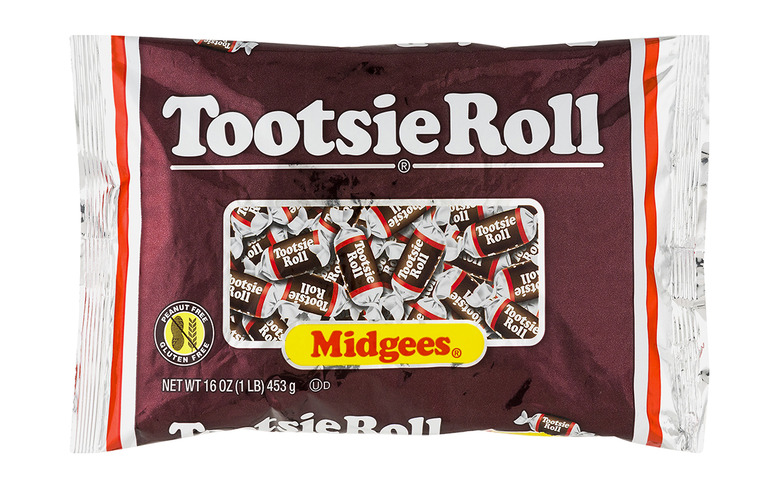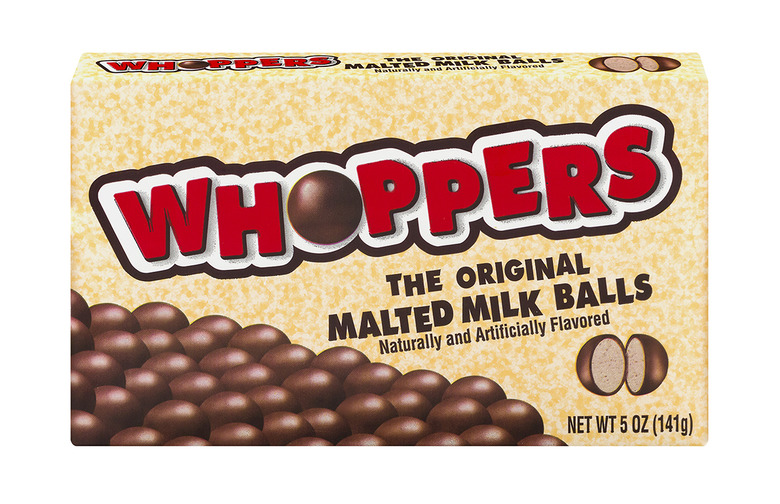Who Invented M&M's And Other Halloween Candy Origin Stories Slideshow
As we dive in to prime candy season, it seems only right that we delve into the history of some of these beloved little treats. For instance, did you know that candy corn was originally marketed as "chicken feed," since the triangular candies looked like the feed farms gave to their fowl? Or that Milky Way candy bars were named after the delicious 1920s malted milkshake and are considered America's first filled candy? There are so many more fun and fascinating facts to be found about the most popular Halloween candies.
3 Musketeers
If the whipped chocolate confection that is the 3 Musketeers bar feels like a classic, that's because it is. It was the fourth candy bar made by the Mars candy company (following the Mar-O-Bar, Milky Way, and Snickers). If you ever wondered why this single-flavor candy bar has the number three in its name, it's because originally the 3 Musketeers came as three smaller bars with distinct fillings: one vanilla whipped, one strawberry whipped, and one chocolate whipped. However, due to rationing and food shortages during WWII, the bar was simplified to the chocolate whipped candy we know and love today.
AirHeads
The AirHead may be a much-beloved taffy treat today, but the road to getting fully developed was a long one. In the mid-'80s, Van Melle wanted to expand their candy portfolio beyond Mentos. There was a competition to see what sold better: a fruit-filled confection in rice paper or Fruit Wrinkles, a cousin of the Fruit Roll-Up. The Fruit Wrinkle won out. But, Van Melle had the technology for the rice paper treat and decided to use the fruit filling, flatten it out, and stick it in a Mylar wrapper. And thus, in 1985, the AirHead was born.
Butterfinger
This crunchy chocolate-covered peanut butter candy bar was the second treat developed by Otto Schnering's Curtiss Candy Company after the Kandy Kake (aka the Baby Ruth). Butterfinger hit the markets in 1923 and was named thanks to a public contest. Today, Butterfingers are essentially an empire. They've spawned everything from the Butterfinger Snackerz to the Butterfinger Mini Bites to the Butterfinger Cup.
Candy Corn
George Renninger, a candy maker at the Wunderlee Candy Company in Philadelphia, is generally credited with having invented this confection in the 1880s. The mixture of sugar, corn syrup, carnauba wax, water, marshmallow, and fondant was first crafted by hand. Despite the origins of the 1880s, it was the Illinois-based Goelitz Confectionery Company — today known as Jelly Belly — which brought the candy to the masses. Originally, candy corn was called "chicken feed" because of its resemblance to that corn and to help market it to a rural clientele.
Hershey Kisses
In 1894, Milton Hershey decided to make chocolate candy coatings for caramels he was producing. By 1900, his company was creating its own milk chocolate in bars, wafers, and other forms. But it wasn't until 1907 that it began producing the flat-bottomed candies we now know as Hershey's Kisses. At first, they were square little treats, but thanks to advancing technology, machines were able to start making them into the little drops we recognize today.
Laffy Taffy
Though taffy candy has been around for quite some time, it wasn't until the 1970s that Laffy Taffy was developed under the name Beich's Caramels. But the name proved to be confusing because, well, the taffy wasn't caramel. Soon after, the candy rebranded and Laffy Taffys started getting printed with entertaining jokes and quips on the wrapper. The cool part? All of the jokes are submitted by children!
M&M’s
In 1932 after Frank Mars' son, Forrest, had a falling-out with his father — creator of the Milky Way bar — he relocated to England, where he began manufacturing full-size candy bars for the troops in the United Kingdom. While there, during the Spanish Civil War, he purportedly encountered soldiers noshing on Smarties, a British confection that is a chocolate bead encased in a hard sugar shell. With chocolate sales plummeting and sugar rationing rising due to the Great Depression taking hold in America, Mars saw an opportunity to capitalize by producing smaller-portioned but equally delicious candies. He returned home to the United States and partnered with Hershey executive William Murrie. Thus, M&M's (named for their creators) were born.
Milky Way
The Milky Way's decadent combination of chocolate, caramel, and pillowy nougat is a true classic. After all, the candy bar — named after the delicious 1920s malted milkshake — is considered America's first filled candy. An overnight success upon its release in 1923, it has remained one of America's most beloved candies since then.
Nerds
Straight out of Willy Wonka's chocolate factory, these bumpy little fruit-flavored sugar pebbles are a modern classic. Nerds were invented by the Willy Wonka Candy Factory in 1983 and came in a separated double-flavor box that allowed you to pick and choose what flavor of Nerds you want to pour into your mouth. Though originally available in just strawberry and grape, Nerds now come in over 14 flavors.
Reese’s Peanut Butter Cups
Working in the Hershey chocolate factory to support his family of 16 inspired H.B. Reese to make his own way in the candy world. Once he was able to afford the ingredients, he began making hard candies, chocolate-covered nuts and raisins, and mints in his basement. He eventually quit his steady job in the factory and sales grew enough for him to get out of the basement and into his own factory. Reese's Peanut Butter Cups first appeared as part of a large candy assortment around 1928. By the mid-1930s, the Peanut Butter Cup was being sold individually wrapped for five cents a pack. Eventually, due to wartime rationing, Reese stopped the production of his other candies and focused all of his efforts on the Peanut Butter Cup. But Reese's — now owned by The Hershey Company — has since rebounded with dozens of chocolate and peanut butter products in their line.
Skittles
Skittles may seem like an age-old candy, but these fruit flavored chews are a relatively modern invention; they hit wide circulation in the U.S. just 38 years ago. First developed by a British company in 1974, stateside production of these chewy, fruit-flavored candies began eight years later. The original red bag of Skittles first featured grape, lemon, lime, orange, and strawberry candies. In 2013, lime was replaced with green apple.
Smarties
You can thank Mother Nature and World War II for the inspiration behind this candy. Ce De Candy Company, the family-owned candy producer founded in 1949, invented Smarties in hopes of creating a candy that wouldn't melt in the sun. Their signature shape comes from repurposed pellet machines made for the war effort.
Snickers
The Snickers bar, introduced in 1930, was the second candy bar created by the Mars Candy Company, after the Milky Way. The "chocolate malted milk in a candy bar" was named after company founder Frank Mars' favorite racehorse. Throughout its 87-year history, Snickers has come in many forms, including Snickers Munch, Snickers Marathon energy bars, Snickers Peanut Butter Squared, and Snickers Almond.
Tootsie Roll
These chocolate candies have been continuously manufactured in the U.S. since 1907. Leo Hirshfield named these uniquely textured candies after his daughter, Clara, whose nickname was "Tootsie," after receiving a patent for their not quite caramel and not quite taffy texture. Fun fact: the Tootsie Roll was the first penny candy to be individually wrapped in America!
Whoppers
Malted milk powder was invented in England 1887 by William Horlick. While it was originally marketed as a "health food," it ended up being used to sweeten other foods, including candies. In 1936, Forrest Mars created Maltesers, a candy with a malted milk center covered with chocolate, which made their way to the United States as "Giants" in 1939 and changed their name to Whoppers just 10 years later. If this isn't enough Halloween fun facts to satisfy your sugar craving, learn about candy through the years with the most popular Halloween candies of every decade.
